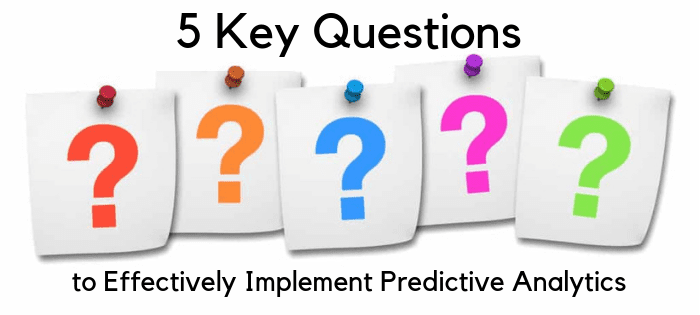
Safety
Comments: No Comments
How much data does your company generate associated with your business operations? What do you do with that data? Are you using it to inform your business decisions and, potentially, to avoid future risks?
Predictive Analytics and Safety
Predictive analytics is a field that focuses on analyzing large data sets to identify patterns and predict outcomes to help guide decision-making. Many leading companies currently use predictive analytics to identify marketing and sales opportunities. However, the potential benefits of analyzing data in other areas—particularly safety—are considerable.
For example, safety and incident data can be used to predict when and where incidents are likely to occur. Appropriate data analysis strategies can also identify the key factors that contribute to incident risk, thereby allowing companies to proactively address those factors to avoid future incidents.
Key Questions
Many companies already have large amounts of data they are gathering. The key is figuring out how to use that data intelligently to guide future business decision-making. Here are five key questions to guide you in integrating predictive analytics into your operations.
-
What are you interested in predicting? What risks are you trying to mitigate?
Defining your desired result not only helps to focus the project, it narrows brainstorming of risk factors and data sources. This can—and should—be continually referenced throughout the project to ensure your work is designed appropriately to meet the defined objectives.
-
How do you plan to use the predictions to improve operations? What is your goal of implementing a predictive analytics project?
Thinking beyond the project to overall operational improvements provides bigger picture insights into the business outcomes desired. This helps when identifying the format results should be in to maximize their utility in the field and/or for management. In addition, it helps to ensure that the work focuses on those variables that can be controlled to improve operations. Static variables that can’t be changed mean risks cannot be mitigated.
-
Do you currently collect any data related to this?
Understanding your current data will help determine whether additional data collection efforts are needed. You should be able to describe the characteristics of data you have, if any, for the outcome you want to predict (e.g., digital vs. paper/scanned, quantitative vs. qualitative, accuracy, gathered regularly, precision). The benefits and limitations associated with each of these characteristics will be discussed in a future article.
-
What are some risk factors for the desired outcome? What are some things that may increase or decrease the likelihood that your outcome will happen?
These factors are the variables you will use for prediction in the model. It is valuable to brainstorm with all relevant subject matter experts (i.e., management, operations, engineering, third-parties, as appropriate) to get a complete picture. After brainstorming, narrow risk factors based on availability/quality of data, whether the risk factor can be managed/controlled, and a subjective evaluation of risk factor strength. The modeling process will ultimately suggest which of the risk factors significantly contribute to the outcome.
-
What data do you have, if any, for the risk factors you identified?
Again, you need to understand and be able to describe your current data to determine whether it is sufficient to meet your desired outcomes. Using data that have already been gathered can expedite the modeling process, but only if those data are appropriate in format and content to the process you want to predict. If they aren’t appropriate, using these data in modeling can result in time delays or misleading model results.
The versatility of predictive analytics can be applied to help companies analyze a wide variety of problems when the data and desired project outcomes and business/operational improvements are well-defined. With predictive analytics, companies gain the capacity to:
- Explore and investigate past performance
- Gain the insights needed to turn vast amounts of data into relevant and actionable information
- Create statistically valid models to facilitate data-driven decisions
